
John Wycliffe Begins Translation of the Scriptures into English, January 16, 1382
 n Oxford Don possessing great academic prowess and enjoying the perks of royal patronage—the “Morning Star of the Reformation”, as he became known—was an unlikely figure of subversion, and his weapon was none other than the Word of God. It is perhaps testament to both Wycliffe’s doctrinal triumph and his own personal humility that the movement his arguments and translation produced loomed large over his own reputation and fame. n Oxford Don possessing great academic prowess and enjoying the perks of royal patronage—the “Morning Star of the Reformation”, as he became known—was an unlikely figure of subversion, and his weapon was none other than the Word of God. It is perhaps testament to both Wycliffe’s doctrinal triumph and his own personal humility that the movement his arguments and translation produced loomed large over his own reputation and fame.
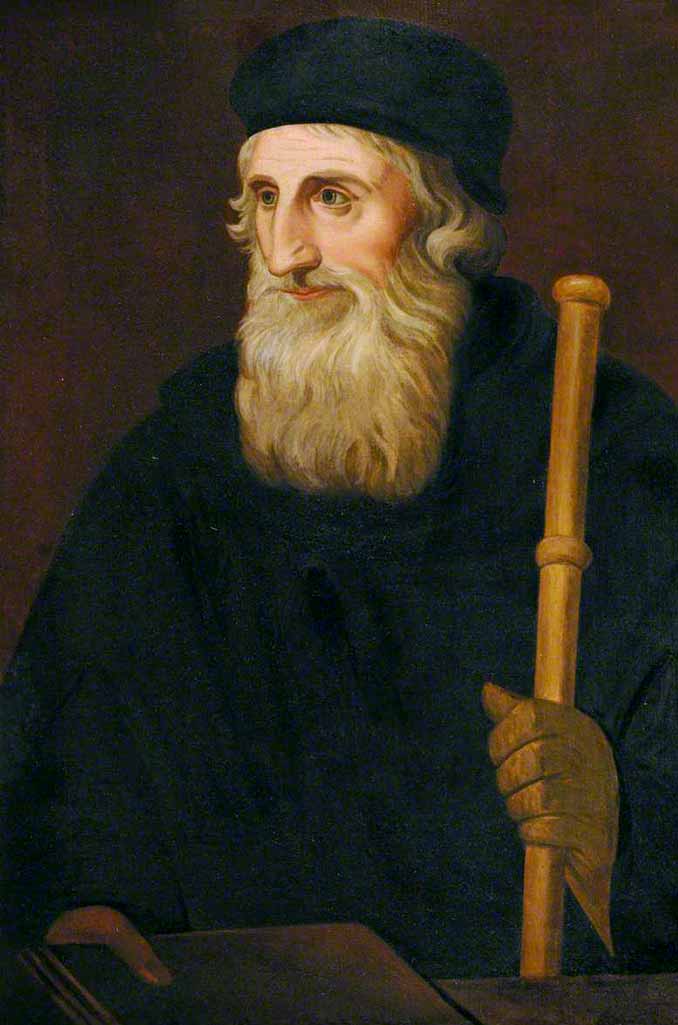
John Wycliffe (c. 1328-1384)
As a new decade dawned in the latter half of the 14th century, worldly prospects were bleak. The Black Death had decimated nearly a third of the world’s population and the Western church was torn apart by the Great Schism with multiple popes laying claim to Saint Peter’s Chair.
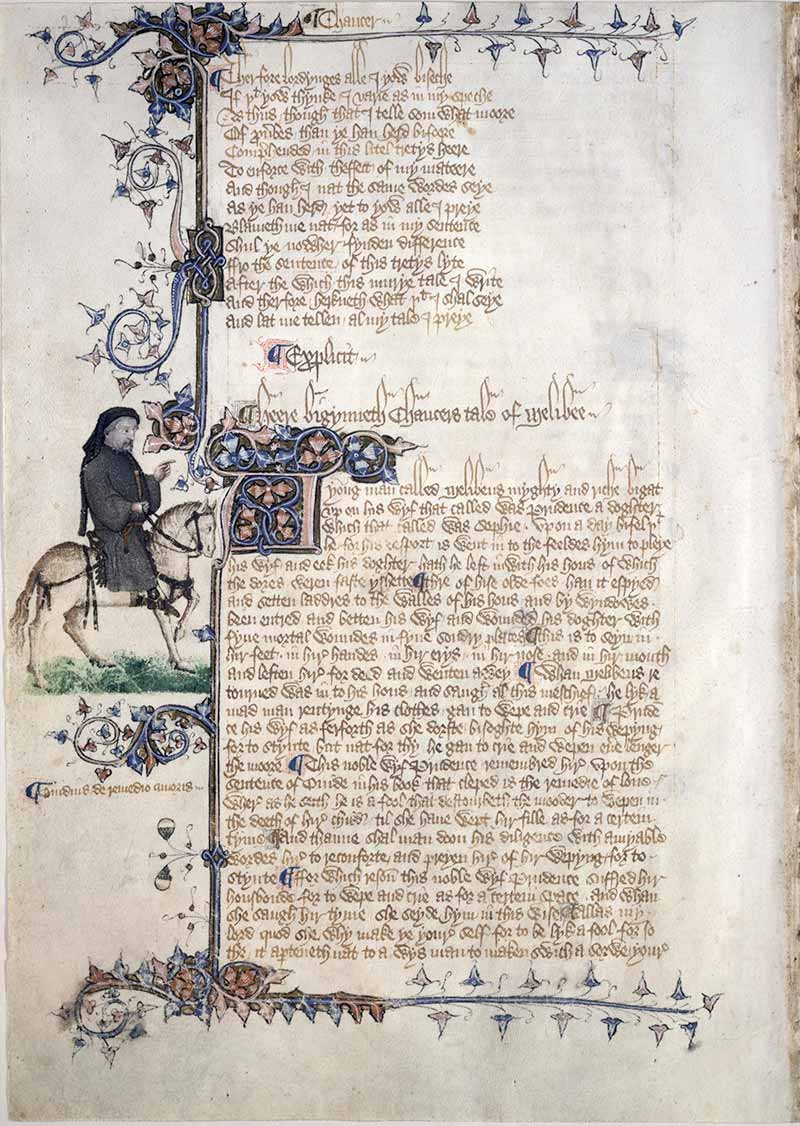
A page from the Ellesmere Manuscript edition (c. 1410) of Chaucer’s Canterbury Tales, with a portrait of Chaucer in the page embellishments

A map of the nine levels of Hell, as imagined by Dante in his Inferno
|
John Wycliffe’s own native England had long been consumed with the bloody Hundred Years War against France. The cost of this conflict left England drained of resources and moral surety, governed by a child King whose uncle acted as Regent. So while Chaucer wrote his Canterbury Tales in an effort to reignite some spark of the old chivalry, and Dante imagined his nine circles of hell, John Wycliffe became convinced the anecdote to the despair and collapse all around him was reliance upon the Divine promises of God. Yet how was the Word to be a universal comfort—much less used as a foundation for living—when the general populace and their preachers had no intimate contact with it? Except for the few and privileged, men educated fluently in Greek, Latin or Hebrew and positioned in places such as Oxford where the venerable text was housed, few in that generation had ever seen a copy of the entire canon.
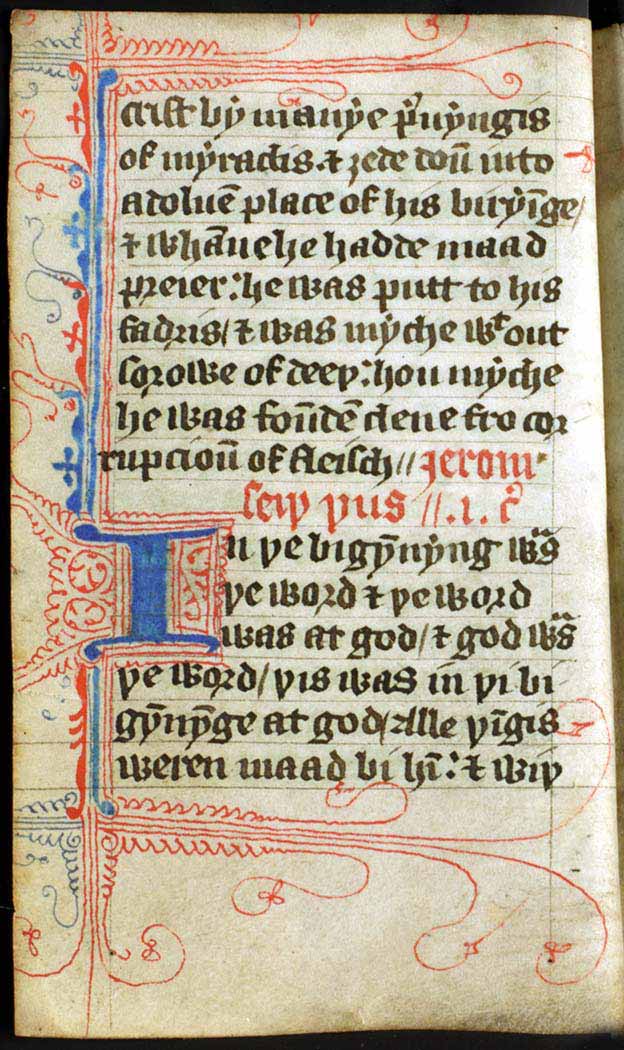
The beginning of the Gospel of John in a copy of John Wycliffe’s translation of the Bible, from a pocket-sized copy which was made in the late 14th Century
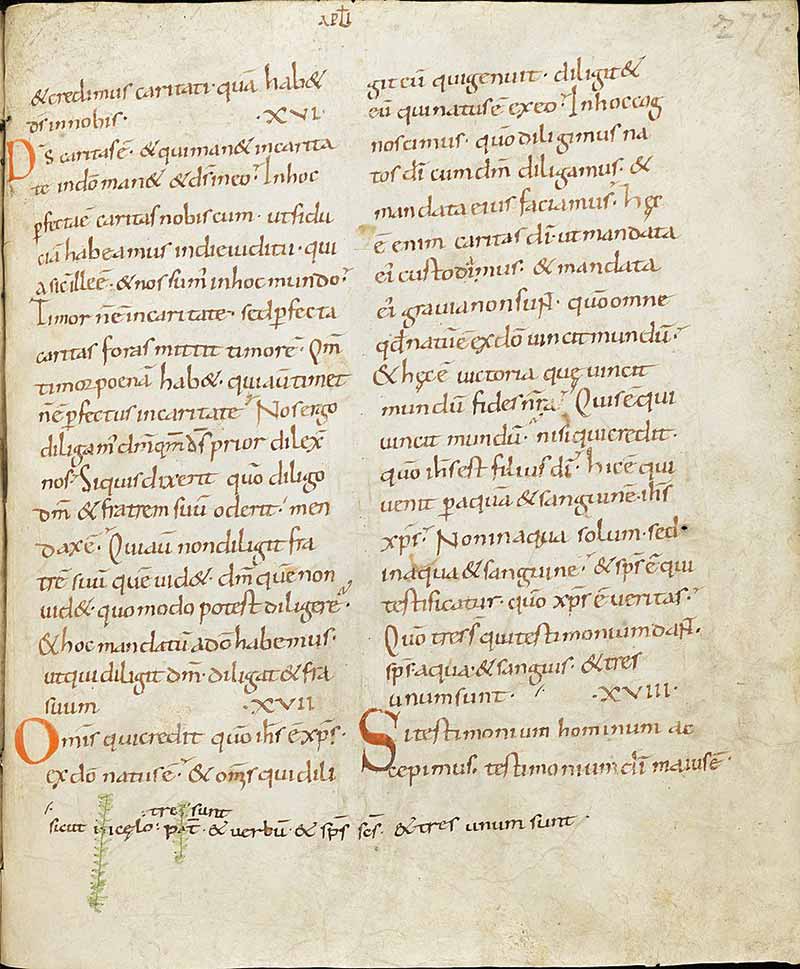
1 John 5 from the 9th Century Vulgate
|
While there is much contention regarding what extent of the now eponymous Wycliffe Bible was translated by the man himself or by his students and fellow Lollards, his endeavors brought forth the first complete Bible to be written into middle English, predating William Tyndale’s own extraordinary translation by over one hundred and forty years. Drawn from Jerome’s Vulgate translation, Wycliffe’s Old and New Testaments were completed two years after the project began, although further updated versions were done by Wycliffe’s assistant John Purvey and others in 1388 and 1395, after Wycliffe’s death.
By that time, and despite being too early to employ the prolific distribution by printing press that Tyndale’s Bible had profited from, these hand-written testaments were spread widely throughout England and eventually Europe.
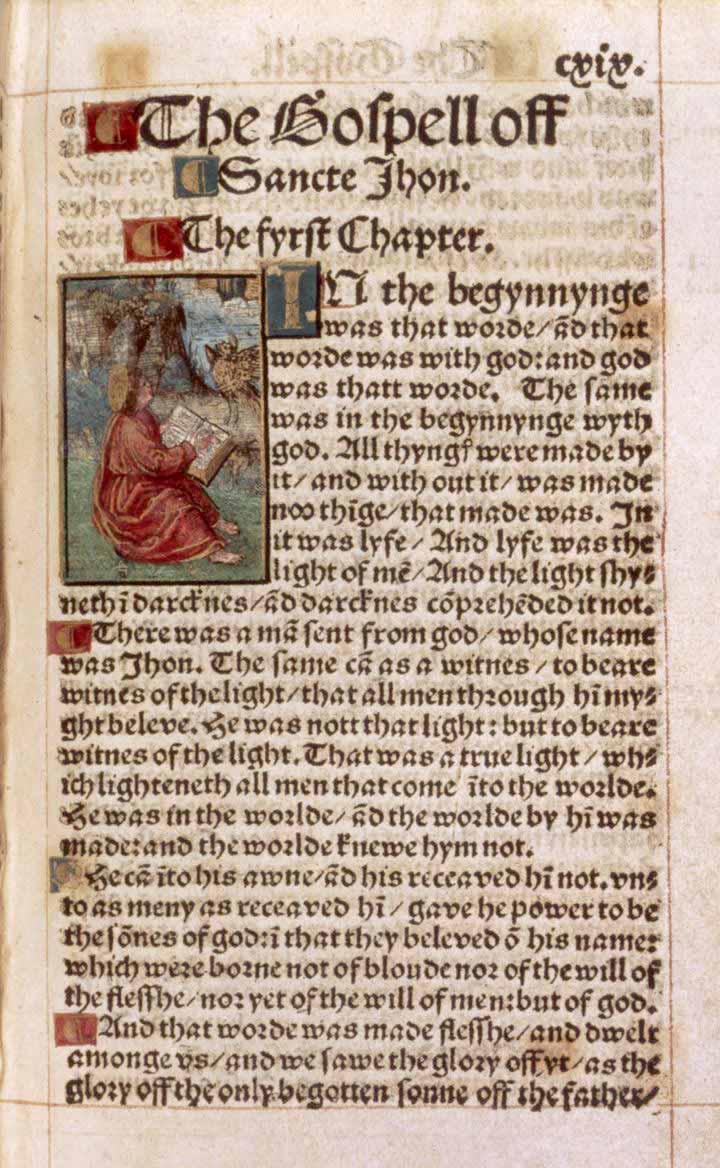
The opening page to the Gospel of John in a 1526 edition of William Tyndale’s translation of the Bible—cleanly mass-produced with the help of the printing press
The established church was infuriated by these Bibles, and felt threatened by the doctrine their common language suggested. In Wycliffe’s own words the Bible taught:
“Neither place nor human election makes a person a member of the church but divine predestination in respect of whoever with perseverance follows Christ in love . . . Go and preach, it is the sublimest work; but imitate not the priests whom we see after the sermon sitting in the ale-house, or at the gaming table . . . After your sermon is ended, visit the sick, the aged, the poor, the blind and the lame and succour them.”
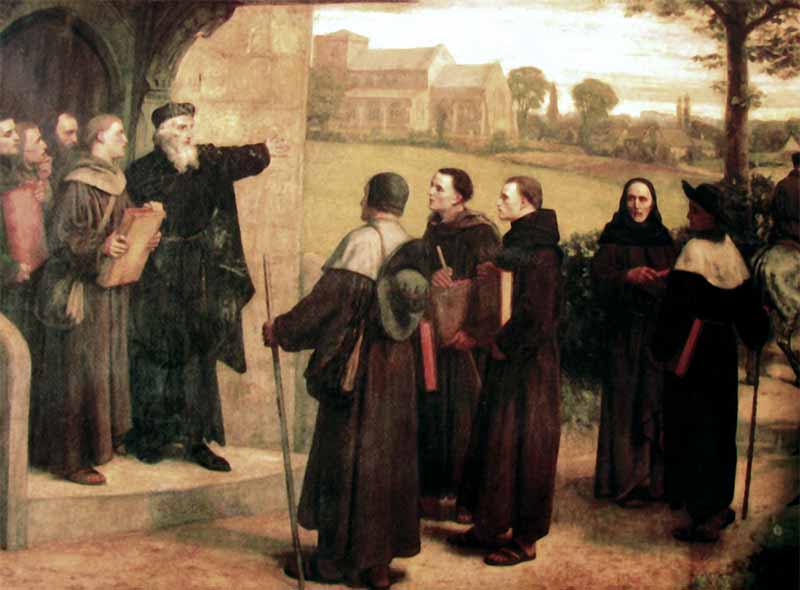
Wycliffe Giving ‘The Poor Priests’ His Translation of the Bible,
by artist William Frederick Yeames (1835-1918)
Wycliffe followed these translations with sharp polemics, calling for the renouncing of sin, reliance solely on Christ for salvation, condemnation for the superstition of transubstantiation and immorality of the clergy, and his denial of the Pope’s authority. All of these later became indisputable tenants of the Reformation of the 15th and 16th centuries. Wycliffe’s readers agreed and, driven by the holy zeal of the freshly-awakened, spread what they insisted were not new doctrines but ancient ones—those assurances of Saint Paul and the reasonings of Saint Augustine that had been too long buried under pomp and ignorance.
For more than a hundred years, the bishops harried these Christians out of their parishes, seized their fragments of manuscript Bibles, attempted to force them to recant, forfeited their property and burned many of them at the stake. Wycliffe himself was allowed a peaceful death, despite severe harassment in his lifetime. But his grave was given no such clemency.
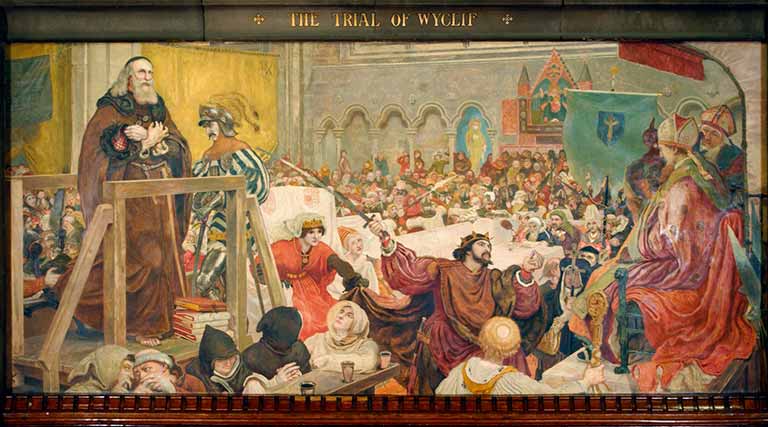
The Trial of Wycliffe A.D. 1377, by Ford Madox Brown, a mural at Manchester Town Hall
In 1415, more than thirty years after his death, the Council of Constance formally condemned the forty-five “errors” of Wycliffe, decreeing that all his works were to be burned along with his bones. To quote the eloquent words of a seventeenth-century writer:
“They burned his bones to ashes and cast them into the Swift, a neighbouring brook running hard by. Thus the brook conveyed his ashes into the Avon, the Avon into the Severn, the Severn into the narrow seas and they into the main ocean. And so the ashes of Wycliffe are symbolic of his doctrine, which is now spread throughout the world.”
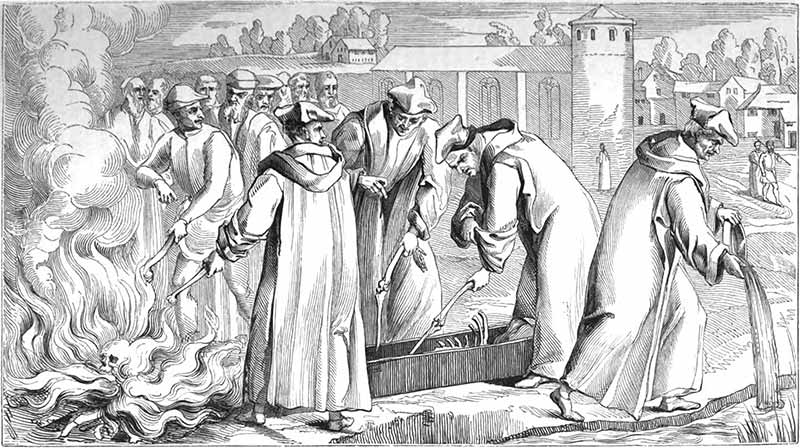
Exhumation of John Wycliffe, from The Acts and Monuments of John Foxe, vol. 3, 1837 edition
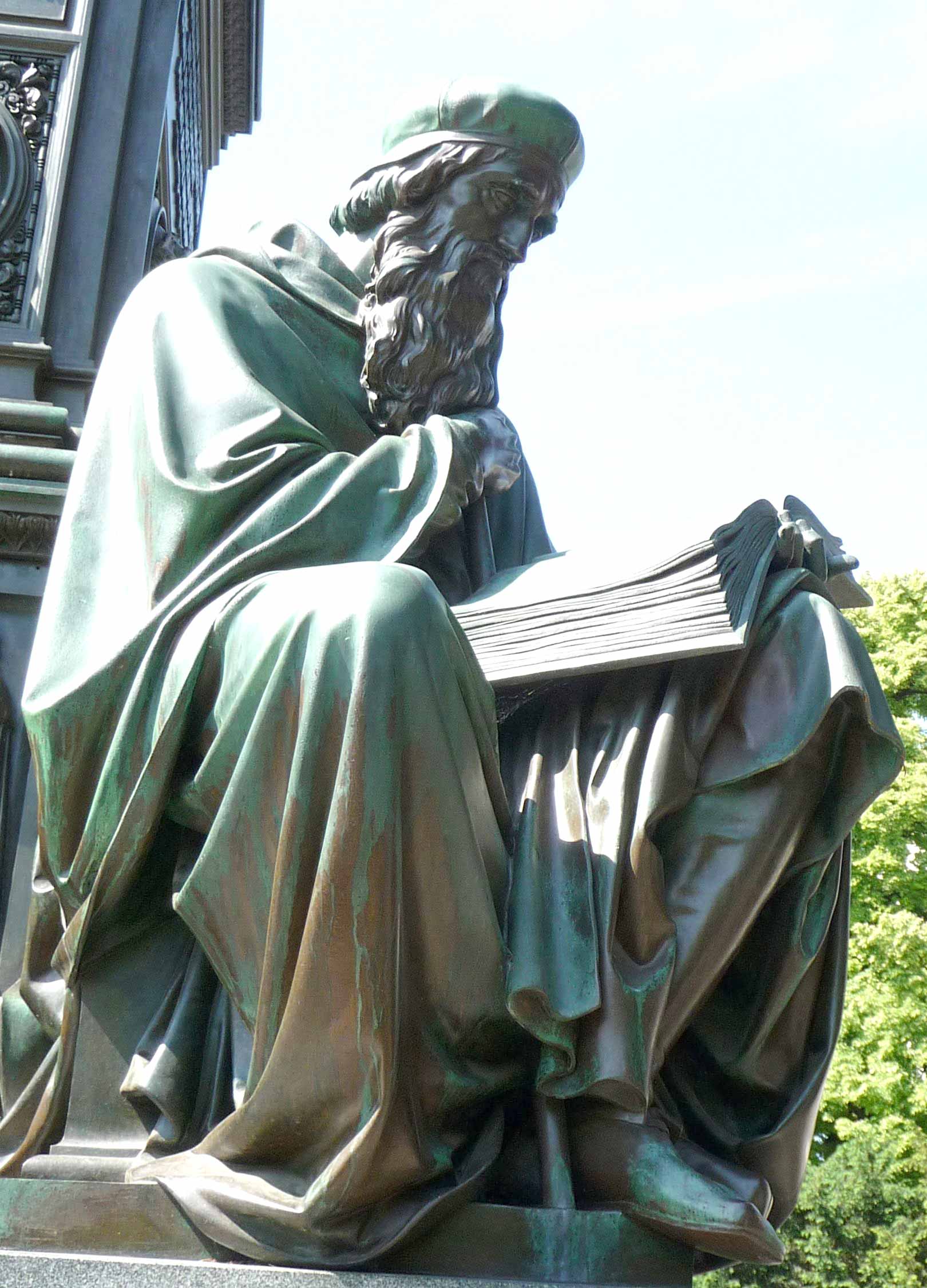
Detail of the Luther Memorial below, portraying John Wycliffe seated at the back right corner of Luther’s pillar, from the viewer’s perspective
|
Unearthing those figures who lit a torch during the “dark ages” is one of the most fascinating and hopeful areas of Reformed study. And while in no way discounting the impact of giants such as Luther, Calvin and Knox, it is emboldening to learn of those who, like Wycliffe and Hus, did not enjoy having the popular tide of opinion on their side but were drawn to the truth centuries before those rewarding days of the Reformation. Their sacrifices, translations and guardianship of the Gospel is indeed our precious inheritance to maintain and defend.
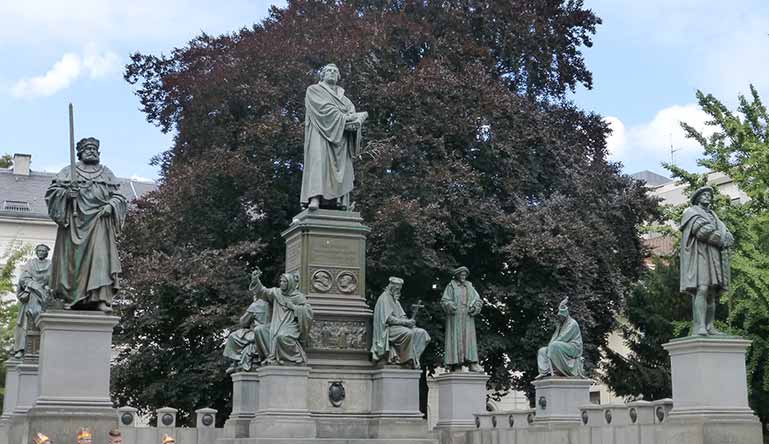
Martin Luther Memorial (Lutherdenkmal) in Worms, Germany: Luther’s central statue is surrounded by the figures of his lay protectors and earlier Church reformers including John Wycliffe

Image Credits:
1 Portrait of John Wycliffe (wikipedia.org)
2 Canterbury Tales (wikipedia.org)
3 Dante’s imagination of Hell (wikipedia.org)
4 Wycliffe Bible page (wikipedia.org)
5 Vulgate page (wikipedia.org)
6 Tyndale Bible page (wikipedia.org)
7 Wycliffe and humble preachers (wikipedia.org)
8 Wycliffe’s Trial mural (wikipedia.org)
9 Exhumation of Wycliffe (wikipedia.org)
10 Wycliffe detail (wikipedia.org)
11 Martin Luther Memorial, Worms (wikipedia.org)
|







